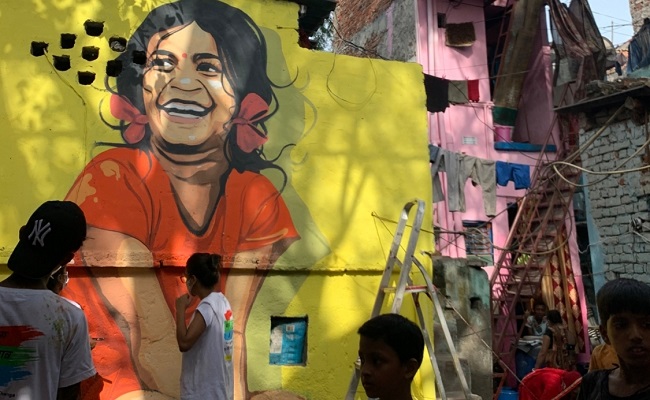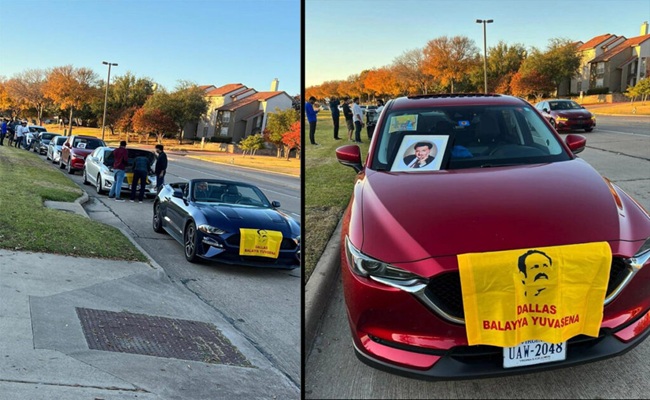
New Delhi: For this 17-year-old, it all started at a government school in Sarojini Nagar. The school's principal, who was going to retire, wanted to leave behind something unique on the front wall.
"When I heard about the opportunity through the NGO 'Each One Teach One', my head was abuzz with ideas. I spent the next week in a flurry of anticipation as I rallied to organise scaffolding, paint, rollers, hand sanitisers and slingshots -- to scare away monkeys -- and work with a college Arts student on a mural design," remembers Anika Somaia, who founded 'Open Canvas', a public arts project in 2019."
Till date, the project has painted murals at 50 sites across Delhi, engaged more than 200 volunteers, hosted 15 artist-led mural painting workshops to attract young talent and received funding and support from Nobel Peace Prize Winner Kailash Satyarthi and Nature Morte.
With the recently concluded 'Sanjay Camp' held last week where they worked the wall outside an urban slum in Delhi where Kailash Satyarthi Children's Foundation runs its 'Bal Mitra Mandal' programme, Somaia says that after her first project years ago, she realised that public creation was not just a testament to the importance of creating beautiful things; but highlights the need for art to be liberated from behind gallery walls.
"So I sat down and reflected on what was compelling me towards mural creation, and I came to realise it was this idea of bringing art into public space and using it to uplift communities. That seemed to be the golden thread tying all these artworks together and it has since become the goal of 'Open Canvas'."
"It's because of this that I've spent days navigating through long winding lanes in Delhi's low-income neighbourhoods, knocking on doors and asking for permissions to create art on nearby walls -- and it's also why I've come up against reluctance at the start. Some residents will smile and shake their heads. Others have slammed their doors."
Stressing that she has been noticing that more and more, visuals in our country's public spaces are limited to advertising, religious messaging and political propaganda -- rather than art, she adds, "At the same time, art in the formalised, institutionalised sense is often perceived as a sphere of high culture inaccessible to many. So yes, I think we have lost sight of what public art can be, and how it can transform communal spaces."
Not limiting her work to the capital, one of their partners, 'Each One Teach One', has ties with government agencies and schools in Mumbai, and that is where they are taking their murals next.
"I am also in the process of recruiting a team of core volunteers who will then be able to execute more projects, specifically murals in other states," she says.
Looking forward to establishing more partnerships, particularly with government agencies and paint companies as this would enable 'Open Canvas' to secure more sites and expand its output.
"And through the existing links we have with art galleries, I want to reach out to India's celebrated artists and collaborate on bringing their art into the public sphere, whether it be through murals on a prominent wall or sculptures in a public building," she concludes.
(Sukant Deepak can be reached at [email protected])













